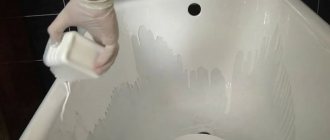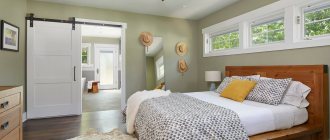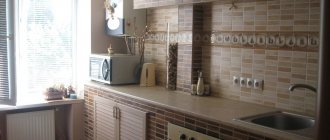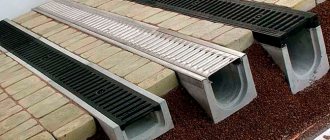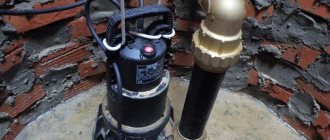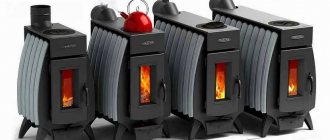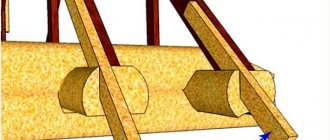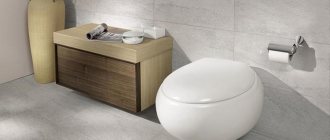Installing a hygienic shower for the toilet is one of the trends today in large and small bathrooms. Using this device, you provide a solution to the situation with intimate hygiene, and do not take up free space in the restroom. It's all about the design features and its advantages (we'll talk about them a little later).
Today we will tell you how to install a hygienic shower yourself, using a set of a minimum number of tools. We will also consider the design of the shower, its features and the height at which it should be mounted.
What is the device intended for and its strengths
Before connecting a hygienic shower, you should decide whether it is needed at all. In most cases, apartment owners prefer to make do with ordinary bidets, and toilet paper remains the most common method of hygiene in the toilet.
Such a device will certainly be useful in eastern countries or areas where residents profess Islam predominate. It is well known that this religion is quite strict in matters of purity.
The main advantages of installing such a mixer:
- Better cleansing of intimate areas compared to toilet paper.
- A high level of sanitary and hygienic conditions in housing, thanks to the flushing of sewage directly into the toilet.
- There are no possible abrasions and irritations on the skin, as is the case with toilet paper, even the highest quality and most delicate types of which can cause uncomfortable sensations.
- The presence of such a device greatly facilitates household chores associated with cleanliness and sanitation. Using this hose with a nozzle, it is easier to clean the plumbing itself, the children's potty or the cat's litter box.
Hygienic shower as a housekeeping assistant Source amazonaws.com
- Research shows that regular use of a hygienic shower reduces the likelihood of hemorrhoids, proctitis, etc., thanks to the additional massage with a stream of water during the cleaning process.
The main advantage of the device remains its compactness. Its placement is possible in the toilet of any, even the smallest, apartment. The dimensions of such a shower are not much different from a toilet paper holder.
Advantages and disadvantages
Pros:
- there is no need to replenish consumables (paper);
- you can set any temperature and water pressure;
- fast and convenient;
- leaves no waste that needs to be removed.
Minuses:
- if the water is turned off, the person will be trapped. In this case, you need to have a spare roll of paper;
- breakage is much more expensive than toilet paper with a hole;
- if there is a pressure drop in the pipeline, you can stain the entire bathroom.
Design Features
The appearance of the hygienic device is practically no different from the well-known standard shower. Both of them consist of:
- mixer;
- flexible hose;
- watering cans.
But the purpose of the device still causes some differences. There is no need for a large, diffuse stream of water, so select a small-sized mixer with a focused, gentle flow without splashing.
Some models of such showers are equipped with a thermostat to automatically regulate the comfortable temperature of the water stream. Once the thermostat is adjusted immediately after installing the shower, it will ensure that the set temperature is maintained throughout its entire lifespan.
A type of hygienic shower for the toilet Source ozonsanteh.ru
This element will protect you from possible unpleasant sensations when coming into contact with too hot or cold water.
The main difference is that the water from the switched-on hygienic shower does not flow until a special flow control button is pressed, and the pressure is adjusted using a special mixer lever.
Possible device installation options
Installing a hygienic shower in the toilet has a number of advantages:
- ease of installation and versatility of installation;
- small design;
- versatility in use;
- low cost;
- comfort in use.
The design of the “hygienic shower” concept is possible in four different external and functional options.
In the form of a shower toilet
This equipment has a special design with nozzles built into the body, which are hidden under the rim when the bidet function is turned off. The control of the device is built into the drain tank, increasing its dimensions. This way you can adjust the power and temperature of the flow, but the direction of the jet does not change by adjustment.
Toilet combined with bidet Source vvannoi.ru
This type of plumbing fixture is produced in floor-mounted and wall-hung versions, can be mechanical or electronic, and is constantly being improved by manufacturers. Therefore, the functionality of the device directly depends on the manufacturer and cost.
In the form of a bidet lid for the toilet
A fairly compact and convenient option that can be easily mounted to an old toilet model. In essence, this is a standard toilet lid of a special design containing a fitting for water supply. The control of the device is built directly into the lid, as a rule, it is capable of heating water, drying and gently lowering the seat.
The weak point of the design is the external water supply using flexible hoses. Often this does not look very aesthetically pleasing.
There are even fully electronic bidet lid options from well-known brands. The functionality and comfort of such elite sanitary ware differs significantly from conventional models, as does the price.
Electronic bidet lid for toilet Source insales.ru
See also: Catalog of companies that specialize in the design and installation of engineering systems.
In the form of a shower mounted on the wall
Arranging a hygienic shower in this way is the most common and convenient. Installation is carried out directly to the pipeline, and the compact watering can is placed on a long flexible hose on the wall. This will require certain construction work.
According to the standard, the height of a hygienic shower from the floor should be 60-80 cm, and the length of the hose should be limited to 1.5 meters. It is not recommended that it touch the floor.
As a rule, this version of the mixer is not equipped with a thermostat. However, it will not be difficult for a competent plumber to install this unit directly near the water supply in an inaccessible place. This will not affect ease of use, because... It is enough to adjust the thermostat once and for the entire service life.
The installation height of the hygienic shower and the distance from the toilet should be set so that using the device does not require additional effort and acrobatic abilities.
Hygienic shower on the wall Source wixstatic.com
In the form of a shower connected to the sink
This option is suitable for combined bathrooms, where there is a sink located near the toilet. You will need to purchase a special mixer with three outlets.
In the case of a separate bathroom, it will be enough to install a small sink in the corner of the room.
If the sink is already standing, then this option will be the most profitable financially and the least labor-intensive. Adjusting the water temperature is also easy in manual mode and does not require additional costs.
Installing a small sink with a hygienic shower in the toilet Source kitchenremont.ru
Types of system
Under the name hygienic shower, various equipment that perform similar functions is combined. Based on the type of construction, there are four types.
Bidet cover
A cover with a built-in water supply device that can be heated. Models are available with the function of smoothly lowering the seat and a built-in hairdryer.
Bidet cover AM.PM
The elite category includes electronically controlled bidet covers. From the remote control, the user adjusts the pressure and direction of the jet, sets the temperature of the liquid, and selects one of five drying modes. At the end of the work, the plumbing fixtures are automatically deodorized.
Instagram store.stroymir
Instagram store.stroymir
Wall equipment
The hose with the sprayer is connected to the water supply in the immediate vicinity of the toilet. The mixer can be built into the wall or mounted on top of it. The pipes are laid in grooves and walled up or laid on top of the wall trim. In the latter case, they are masked with a decorative box. The system is easy to operate and install, and is very reliable. Can be additionally equipped with a thermostat.
Instagram dom_na_okraine_goroda_r
Instagram dom_na_okraine_goroda_r
Sink connection
A good option for combined bathrooms, where the sink is located near the toilet. In such cases, a non-standard mixing device with three outlets is installed, one of which is intended for the shower head. Such models are rarely available with a thermostat; most often the temperature is regulated by a valve supplying hot water.
Instagram kvartal_krasivih_domov
Instagram idea.plus
Bowl cover
The shower set is placed on the edge of the bowl under the lid. A special mounting plate is used for this. The system is simple and easy to use. Its disadvantage is the difficulty of masking supply lines. They can only be hidden in a box made of plastic or wood. It will have to be picked up and installed.
Instagram mirsant_official
Instagram santehnik.spb
Installation methods
Installation of a hygienic shower can be carried out in two ways - external and built-in.
Outer
The external method includes the above-described connection options to a conventional wall-mounted washbasin or bathtub faucet.
The advantages of this method will be the ability to install a mixer with a thermostat or simply adjust the temperature using the mixer lever above the sink. This is often much more convenient than controls installed above the toilet, on its lid or tank.
Built-in
This method involves hiding all communications and mechanisms behind the wall, bringing out only the platform with the lever. A mount for a watering can is also mounted outside. Sometimes it is already located on a common platform. Each option has a very aesthetic and presentable appearance.
Wall chipping
Knowing the required height for installing a hygienic shower, as well as having developed a scheme for connecting communications, you can begin gating the walls. Professionals use special equipment for this. It's called a wall chaser. This is a tool that resembles a large grinder. It has a dust suction function. It stands out quite a lot.
If you don’t have a wall chaser at hand, you can use a hammer drill with a special attachment. The tool must operate in beating mode. Walls made of brick and aerated concrete are easier to tap than foundations made of concrete.
If desired, recesses for pipes can be cut using a grinder. A stone disc is put on it. Next, recesses are created in the wall along the marked lines. Between two such slots, concrete is knocked out using a perforator blade. This option is the dustiest. When creating slits with a grinder, a large amount of dust will be released. You need to work with safety glasses and a respirator. All surfaces in the bathroom will need to be thoroughly cleaned after work.
If you don’t have a grinder, you can make holes along the contour at a short distance from each other (10-15 cm). The space between these holes is knocked out.
Video description
The process of installing a built-in hygienic shower can be viewed here:
This method is more problematic and has many disadvantages:
- the possibility of installation is not always possible and is determined by the presence of ventilation shafts, the thickness of the walls, etc.;
- control of water shutoff is difficult (if the water supply is not shut off, it can lead to a leak);
- there is a possibility of heated water mixing with cold water (this will affect not only the owner of the shower, the neighbors will also feel it). It is recommended to purchase a device containing a built-in check valve or install such a valve separately;
- there are no built-in models with thermostat adjustment on the platform (the temperature control device is usually adjusted once and hidden behind the wall);
- In the absence of a thermostat, the water temperature control is located above the toilet. This means you need to choose the right toilet model, which has an elongated bowl shape.
Useful tips
- Before “dirty” operations, it is necessary to isolate all surfaces that cannot be repaired. Several layers of thick oilcloth are suitable for tiles. Breaking the floor with a broken piece takes 5 seconds, but restoring the tiles is not always possible.
- Do not skimp on insulation films and check the quality of the connection as you go. Only if everything works perfectly can finishing work be carried out and the pipes covered with tiles.
- To prevent the tile from cracking due to the sharp entry of the drill, it is better to cover the drilling site with masking tape. This doesn’t always help, but you need to play it safe. Start with low speeds so as not to spoil the repair.
Do not drill into tiles with a hammer drill. Along with rotation, it produces reciprocating movements and simply breaks the surface. This is useful for scoring, but not for making a neat hole.
- It is recommended to install a small hatch “under the tile” for easy access to the insides of the shower. If a pipe bursts or cracks, water will flood the inside of the wall and destroy it.
- To make a high-quality joint, you will need a tile drill and a ceramic blade.
Video description
The specifics and advantages of hygienic shower options can be seen in this video:
To summarize, a person will need to do:
- marking walls;
- gating;
- pipe laying;
- installation of communications, adapters, valves;
- facing works of new walls;
- connecting the mixer and hose;
- holder fastening;
- adjusting the thermostat, if equipped.
The lack of experience in carrying out at least one of these types of work suggests that it is better to contact a specialist with installation questions. Improperly carried out work can lead to a water breakthrough, flooding of neighbors, and, as a result, compensation for the damage caused.
Video description
Installing a hygienic shower in a toilet with polypropylene soldering:
First, you need to turn off the water supply and make pipe routing, preferably with the least number of turns.
If you have a thermostat, you should carefully approach the issue of connecting the water so as not to confuse the cold and hot pipes. The first is usually located on the right, and the second on the left. Then you should install pipes under the mixer, matching the distance with the holes of the mixer and thermostat.
After this, the wall is walled up and plastered, and then a hose with a mixer is connected. The nuts should be tightened as tightly as possible, but without over-tightening.
It is recommended to use anchor bolts to secure the holder to the wall. You should start by drilling holes for the dowel. A hole depth of 6 cm with a diameter of 6 mm will be sufficient. Then you need to insert the dowels and secure the clamp with anchors. The height of the hygienic shower from the floor should be as convenient as possible for its use by the shortest member of the family. This method is simple and reliable.
An example of placing a hygienic shower with size markings Source pinimg.com
After completing the installation, you should configure and check the operation of the hygienic shower. The pressure is turned on and the product is checked for leaks. A comfortable water temperature is checked and adjusted, and then its supply is shut off. It is recommended to turn off the water supply to the faucet after using the shower to reduce the effect of pressure on the control valve.
Installing a built-in hygienic shower with your own hands
Before installing a hygienic toilet shower in your bathroom, you need to make a decision regarding the alternative that will be used to achieve this goal. Let's look at the two simplest and most effective methods.
One of them is suitable for any type, the other will become relevant only for combined bathrooms. Let's take a closer look.
Built-in . The mixer and all other communications are mounted inside the wall. You can carry all the elements from the bathroom to the restroom, where the toilet is located. The shower holder, the watering can itself and the platform on which the lever (faucet) is located are mounted on the wall. This method has several features that smoothly flow into its disadvantages.
For example, ventilation holes should be provided in the wall. If there are none, then you will need to independently form a box in which communications will be hidden (and this reduces the free space in the restroom). In addition, since the hygienic shower is connected directly to the riser, setting a comfortable temperature can be difficult.
There are precedents when people forget to close the lever. This leads to leaks, albeit small ones.
External (external) . An option for bathrooms where the toilet and bath are in the same room. Here the toilet itself is located not far from the sink, which gives us the opportunity to connect the hygienic shower directly to its faucet. A mixer is connected to the sink, which includes three outlets at once: hot and cold water and a shower.
Video description
You can watch this video about whether you need a hygienic shower and what to look for when choosing one:
When choosing a device, you must pay attention to the material of manufacture. The ideal option would be chrome-plated brass or stainless steel with ceramic inside. Bronze products will be more expensive. But silumin ones are cheap, but not reliable. It is best to purchase products with a quality guarantee. Their selection is very large, and prices generally range from 1 to 15 thousand rubles.
Preparing for installation
Selecting location and installation height
You need to focus on height and body position in a sitting position. The arithmetic average of these two values will give the approximate height. How can you define it differently - install a sink and place objects under it until the position becomes comfortable for the reader.
Tools and materials
You will need:
- wrench;
- mount;
- hammer;
- sledgehammer;
- sealed film;
- roulette;
- drill;
- perforator;
- soldering iron;
- level.
Manufacturers of the best showers for bathrooms
There are quite a lot of products for this purpose in stores and it is very difficult to figure out which one is better. Therefore, professionals recommend giving preference to products from world-famous companies. There are not so many such manufacturers. Based on user reviews and product popularity, the most popular brands are listed below:
- Hansgrohe;
- Damixa;
- Grohe;
- Geberit.
Hygienic shower set TM Grohe Source kaplya.com.ua
Products from these manufacturers will be guaranteed to be of high quality and comfortable, however, the cost of such faucets will be appropriate. But many experts are sure that saving in such a matter is inappropriate. Purchasing a cheaper and lower quality device, as a rule, leads to its faster breakdown and forced costs for its replacement and payment for related work. Therefore, the quality of the purchased plumbing fixtures should directly depend on the complexity of the installation work being carried out. It will be quite expensive to replace a leaky gasket or broken thread when the product is installed built-in.
In order not to become a victim of deception and not to purchase counterfeit goods, it is recommended to purchase plumbing fixtures in salons with a good reputation and with the obligatory presence of the necessary quality certificates for the products offered.
It must be remembered that high-quality products are not made from cheap materials, and their price will be appropriate.
Mixer for bidet with hygienic shower Source sanusel.ru
Estimated cost of products
Most models of such devices on the market are characterized by a fairly high price. However, you can also find budget solutions with acceptable quality. Below we present the average cost of some models - you can use it as a guide when planning your budget.
Grohe thermostatic mixer
- Wall-mounted model Kludi Bozz (brass, without mixer) - 2200 rubles;
- Wall-mounted model RAV Slezak SV982 (brass, built-in mixer) – RUB 8,300;
- Model with thermostat Grohe 0104 thermo (brass) – 15,300 rubles;
- Model for Hansgrohe sink 32140000 (brass) – RUB 14,800;
- VitrA Grand shower toilet - 6,500 rubles;
- YOYO bidet lid – RUB 27,000.
As you can see, products in this segment are quite expensive, but by installing them yourself, you can significantly reduce costs.
Watering can + faucet pair from Hansgrohe
Briefly about the main thing
A hygienic shower is one of the most convenient ways to carry out post-toilet procedures.
- Small in size. It can be placed even in the smallest closet without harming the free space.
- In addition to its direct purpose, it is often used for other household needs.
- The choice of a hygienic shower model is purely individual and depends on the size, layout and design of the toilet room.
- As with other plumbing equipment, it is recommended to purchase only high-quality certified products.
- It is recommended to entrust the installation of this plumbing fixture to a trained specialist, because... errors during installation can lead to big troubles for you and your neighbors. This is especially true for hidden devices.
Ratings 0
Read later
